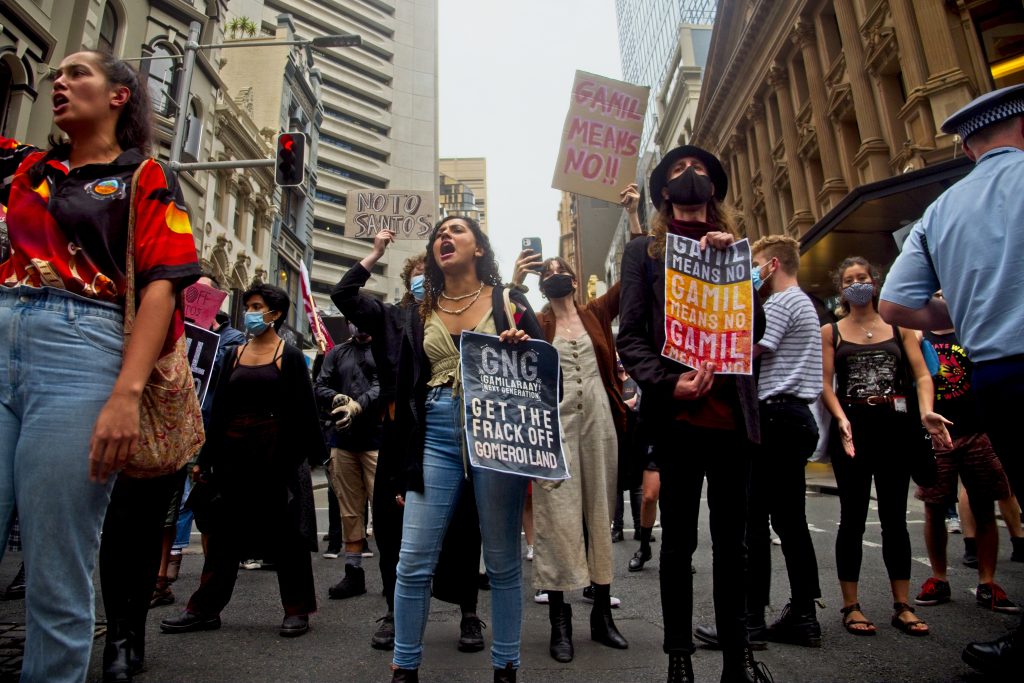For the Love of Country: First Nations, Native Title and Climate Change
Marcelle Burns and Narelle Bedford

First Nations peoples have lived and cared for Country, now known as Australia, for at least 60,000 years. First Nations peoples in Australia have survived significant climatic change in the past, including two ice ages and rising sea levels. In this chapter, we argue that becoming a climate conscious lawyer is not possible without the purposive inclusion of First Nations knowledges and perspectives, and the movement must be part of the broader process of decolonising both legal education and the colonial Australian legal system.
This chapter will introduce the central importance of First Nations knowledges and perspectives for climate conscious lawyers with a case study to illustrate the limitations of existing legal systems and responses to climate issues. Also included are short introductions to key concepts that are foundational to First Nations culture.
Terminology
There are a number of variations within the Gomeroi group, including Kamilaroi, Gamilaroi, Kamilaray, Gamilaaroy, Gamilaraay, Gomilaroi, Gubiliroi, Comleroy, Goomeroi, Komilaroi and Gomaroi.[1]
Key Questions
- Why should climate change advocacy and litigation be informed by respect for First Nations knowledges and perspectives?
- Are existing laws and regulatory systems providing an adequate basis to enable effective engagement with First Nations peoples?
- How can the legal system and climate conscious lawyers improve their own practices?
CHAPTER OUTLINE
1.2 First Peoples’ Knowledges and Climate Change
2. Case Study: Native Title and Climate Change
2.1 Gomeroi People and the Pilliga
2.2 Santos Narrabri Gas Project
2.4 State and Federal Environmental Processes
2.5 The Native Title Future Acts Regime
2.6 Gomeroi Native Title Claim
- See Gomeroi Tribal Nation Secretariat, Submission to NSW Department of Environment and Climate Change Proposed National Parks and Wildlife Amendment Bill 2009 (undated, copy on file with author). ↵
Aboriginal and Torres Strait Islander peoples are the first peoples of Australia, meaning they were here for thousands of years prior to colonisation. Current research confirms that Aboriginal and Torres Strait Islander peoples have lived on the Australian continent for upwards of 60,000 years. While estimates vary, this figure represents the most widely accepted timeframe based on available evidence. Australia is made up of many different and distinct Aboriginal and Torres Strait Islander groups, each with their own culture, language, beliefs and practices. Aboriginal people come from the mainland of Australia and its surrounding islands. The Torres Strait region is located between the tip of Cape York and Papua New Guinea and is made up of over two hundred islands. First Nations is a collective term that refers to Indigenous peoples of a nation, region or place. Indigenous peoples refers to the people with historical and ancestral ties to a place that pre-date colonisation, and is the term used by the United Nations in its Declaration on the Rights of Indigenous Peoples. All these collective terms can be used respectfully. As proper nouns, all should be used with a capital letter.
Country is a word that holds many different meanings for First Nations people, especially given the diversity of First Nations across Australia. There are certain concepts and ideas about Country that many First Nations people share. For instance: Country is alive. Country is timeless. And Country is us. Country refers to the lands, waterways, seas and skies to which First Nations peoples are connected through ancestral ties and family origins. Country also encompasses relationships, such as relationships with plants, relationships with animals and relationships with Ancestors. Country is a proper noun, which is why it should be capitalised.

